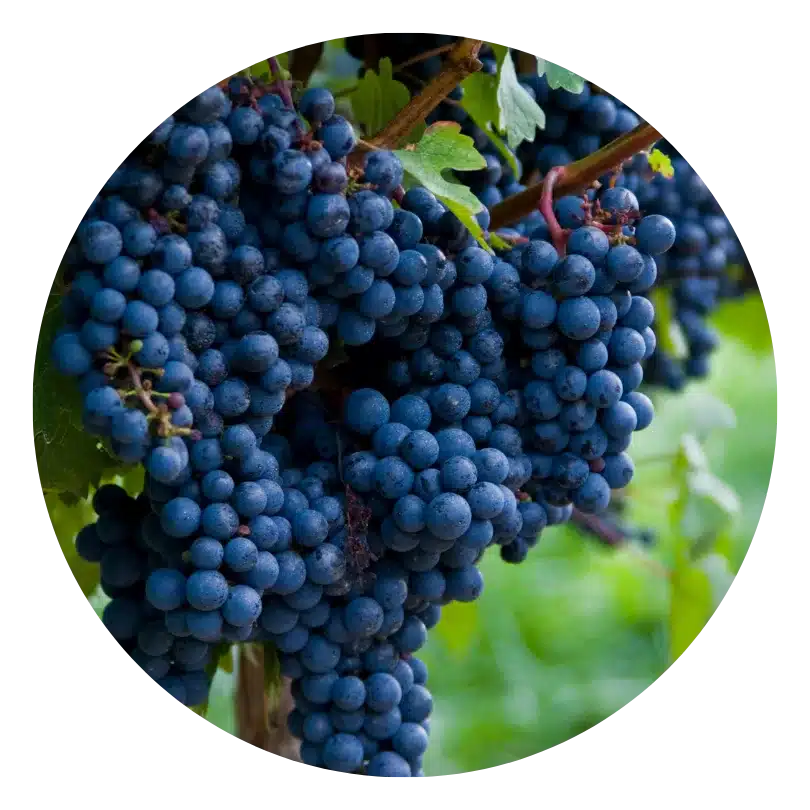Organic
What are Cabernet Sauvignon Grape Skins and Seeds?
Cabernet Sauvignon grape skins and seeds, sourced from the Vitis vinifera plant, are celebrated not only for their role in winemaking but also for their exceptional skincare benefits. Rich in phenolic compounds, antioxidants, and natural pigments, these components offer a range of therapeutic effects when applied topically.
Packed with bioactive compounds like catechins, anthocyanins, and resveratrol, grape skins and seeds contribute to skin health by protecting against environmental damage, reducing inflammation, and enhancing the skin’s natural healing processes. Their natural colorant properties further enhance their appeal in eco-conscious cosmetic formulations.
Why We Love It
Powerful Antioxidant Protection:
The phenolic compounds in grape skins and seeds, such as catechins and anthocyanins, exhibit robust antioxidant activity. These compounds neutralize free radicals, reducing oxidative stress that can lead to premature aging and skin damage. Their protective effects make them ideal for anti-aging products and formulations aimed at mitigating damage caused by UV radiation (Salem et al., 2022; Francisco, 2024).
Anti-Inflammatory Benefits:
Phenolic compounds in grape extracts are also known for their anti-inflammatory properties. They help modulate skin inflammation, reducing redness, swelling, and irritation associated with conditions such as acne, eczema, and sensitive skin (Salem et al., 2022; Nayak et al., 2011).
Natural Colorant Properties:
The anthocyanins in grape skins provide a rich, deep red hue, making them a natural and plant-based colorant for cosmetics. Beyond their visual appeal, these pigments are linked to improved skin hydration and elasticity, which are essential for youthful, healthy skin (Obreque‐Slier et al., 2010).
Enhanced Wound Healing:
Grape seed extracts, rich in resveratrol, accelerate the wound-healing process by modulating pathways involved in tissue repair. This makes them effective in products designed for skin regeneration and healing (Nayak et al., 2011).
Eco-Friendly and Natural Appeal:
The use of grape skins and seeds in skincare aligns with the growing consumer demand for sustainable and plant-based ingredients. These natural byproducts of winemaking offer a zero-waste solution while delivering exceptional therapeutic benefits (Salem, 2023).
References
- Salem, Y., et al. (2022). Multi-step biomass fractionation of grape seeds from pomace, a zero-waste approach. Plants, 11(21), 2831. Link
- Francisco, K. (2024). Effectiveness of using hydrophobic silica aerogel and grape seed extract in creating a sunscreen formula. IOP Conference Series: Earth and Environmental Science, 1372(1), 012077. Link
- Obreque‐Slier, E., et al. (2010). Comparative study of the phenolic composition of seeds and skins from Carménère and Cabernet Sauvignon grape varieties (Vitis vinifera L.) during ripening. Journal of Agricultural and Food Chemistry, 58(6), 3591-3599. Link
- Nayak, B., et al. (2011). Wound-healing properties of the oils of Vitis vinifera and Vaccinium macrocarpon. Phytotherapy Research, 25(8), 1201-1208. Link
- Salem, Y. (2023). Exhausted grape seed residues as a valuable source of antioxidant molecules for the formulation of biocompatible cosmetic scrubs. Molecules, 28(13), 5049. Link



